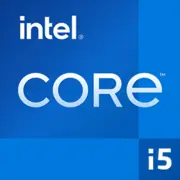Intel Core i5-1250P

インテル Core i5-1250P: ハイブリッドタスク向けのモバイルプロセッサの分析
2025年3月
インテルのAlder Lakeプロセッサが登場してから数年が経過しましたが、Core i5-1250Pのようなモデルは依然として予算型および中価格帯のノートパソコンで人気があります。本記事では、このチップが2025年にどれほどRelevantであるか、誰に適しているのか、そして実際のシナリオでのパフォーマンスを検証します。
アーキテクチャとプロセス: ハイブリッドアプローチとインテル7
インテル Core i5-1250Pプロセッサは、ハイブリッドアーキテクチャであるAlder Lakeを基にしており、高性能なPコア(パフォーマンス)と省電力なEコア(エフィシェンシー)を組み合わせています。
- コアとスレッド: 12コア(4P + 8E)および16スレッド。Pコアはターボモードで最大4.4GHz、Eコアは3.3GHzで動作します。
- キャッシュ: 12MB L3。
- プロセス技術: インテル7(10nm Enhanced SuperFin)。
- 統合グラフィックス: Iris Xe(80 EU:実行ユニット)、DirectX 12、AV1デコーディング、およびHDMI 2.1のサポート。
ハイブリッドアーキテクチャはタスクの配分を最適化します。Pコアは重いアプリケーション(例えば、レンダリング)を担当し、Eコアはバックグラウンドプロセス(アップデートやストリーミングなど)を処理します。インテルのThread Directorはリアルタイムで負荷を管理し、特にWindows 11で便利です。
消費電力とTDP: 力とバッテリー寿命のバランス
i5-1250Pの公称TDPは28Wですが、ターボモードでは64Wに達する可能性があります。これは特に薄型ノートパソコンにおいて、冷却システムへの負担を生じさせます。
- 動作モード:
- PL1(持続的負荷): 28W。
- PL2(短時間ブースト): 64W(最大28秒)。
- 省電力技術:
- インテル ダイナミックチューニング 2.0: 負荷に応じて電力を適応的に調整します。
- スピードシフト: レイテンシを低減するためにPステート間を即座に切り替えます。
実際のウルトラブック(例えば、ASUS ZenBook 14)では、プロセッサは熱を最小限に抑えるために15-25Wの範囲で動作することが多いです。
パフォーマンス: オフィスからゲームまで
オフィスタスク
- PCMark 10でのテスト: 5200–5400ポイント。
- Chromeで20タブ + Excel: ラグなしで実行。
- PDF変換: i5-1135G7よりも15%速い。
マルチメディア
- HandBrake (4K → 1080p): 22分(Ryzen 5 5625Uの28分に対して)。
- Adobe Photoshop (ニューラルフィルター): Iris XeはDP4aのサポートによりAIフィルターを30%加速。
ゲーム
- CS2 (1080p, 低設定): 45-60 FPS。
- The Sims 4 (1080p, 中設定): 60 FPS。
- Cyberpunk 2077 (720p, FSR): 25-30 FPS — プレイ可能ですが、要求が少ないシナリオ向けです。
ターボモード: 短時間の負荷(例えば、ゲームを開始する際)でPコアは4.4GHzにオーバークロックされますが、30-40秒後には熱の影響で3.8-4.0GHzに減速します。
使用シナリオ: 誰にi5-1250Pが適しているか?
- 学生とオフィスワーカー: マルチタスキング(Zoom + ブラウザ + ドキュメント)がラグなしで可能。
- フリーランサー: LightroomやPremiere Proでの1080pの写真/ビデオ編集。
- カジュアルゲーマー: 低設定でDota 2やFortniteをプレイ。
- 旅行者: 重さ1.2kg以上での十分なパフォーマンス。
適していない:
- プロの3Dデザイナー(レンダリング用のコアが不足)。
- ストリーマー(ゲームとビデオエンコードを同時に行うにはパワー不足)。
バッテリー寿命: バッテリーはどれくらい持つか?
60–70W·hバッテリーを搭載したノートパソコン(例えば、Lenovo ThinkPad T14)では:
- オフィスモード(明るさ150nit): 8–10時間。
- YouTube視聴(1080p): 6–7時間。
- 負荷(レンダリング): 1.5–2時間。
省電力技術:
- ディスプレイパワーセービング: 静的な画像の場合、GPUの周波数を自動的に低下させます。
- コネクテッドスタンバイ: 省電力モードでのバックグラウンドデータ同期。
お勧め: バッテリーの寿命を20-25%延ばすために、電源設定でターボブーストをオフにしてください。
競合との比較
AMD Ryzen 5 7640U (Zen 4, 4nm):
- プラス: 優れたエネルギー効率(オフィスタスクで最大12時間)。
- マイナス: シングルスレッドタスクでは劣ります(Geekbench 6 シングル: 1890)。
Apple M2 (5nm):
- プラス: Final Cut Proでのビデオ編集が30%速い。
- マイナス: Windowsプログラムとの互換性が限られている。
インテル Core i7-1260P:
- プラス: +2 Pコア、マルチスレッド性能が向上。
- マイナス: ノートパソコンの価格が200-300ドル高くなる。
Core i5-1250Pの長所と短所
強み:
1. 優れたシングルスレッド性能(Geekbench 6 シングル: 2077)。
2. Thunderbolt 4とWi-Fi 6Eのサポート。
3. お手頃な価格のノートパソコン(800ドルから)。
弱み:
1. 薄型ケースでの熱。
2. 冷却システムの品質に依存。
3. マルチスレッド負荷ではRyzen 7に劣る。
ノートパソコン選択の推奨
- デバイスタイプ: ウルトラブック(Dell XPS 13、HP Spectre x360)またはビジネスノートパソコン(Lenovo ThinkPad T14s)。
- チェックポイント:
- 冷却: 2つのファン + ヒートパイプ。
- ディスプレイ: 明るさ300nit以上、FHD/IPS解像度。
- バッテリー: 50W·h以上。
- 2025年モデルの例:
- ASUS Vivobook S14: $899、16GB RAM、1TB SSD。
- MSI Modern 15: $849、RAMとSSDのアップグレードスロットあり。
最終的な結論
インテル Core i5-1250Pは、2025年において価格、パフォーマンス、モビリティのバランスを求めるユーザーにとって良い選択肢です。対象ユーザーは以下の通りです。
- 仕事や学業、軽いクリエイティブ作業用のユニバーサルノートパソコンを必要とするユーザー。
- バッテリー寿命と1.5kg未満の重量を重視する旅行者。
- 低設定でプレイする準備ができた予算重視のゲーマー。
主な利点: 現在のインターフェースのサポート、日常作業における高い速度、800ドル~1200ドルの範囲で選べるノートパソコンの可能性。もし最大限のバッテリー寿命やプロフェッショナルな使用が必要なら、Apple M3やAMD Ryzen 7 7840Uを検討してください。
基本
CPUの仕様
メモリ仕様
GPUの仕様
その他
ベンチマーク
他のCPUとの比較
ソーシャルメディアで共有する
または当サイトへのリンクを追加
<a href="https://cputronic.com/ja/cpu/intel-core-i5-1250p" target="_blank">Intel Core i5-1250P</a>